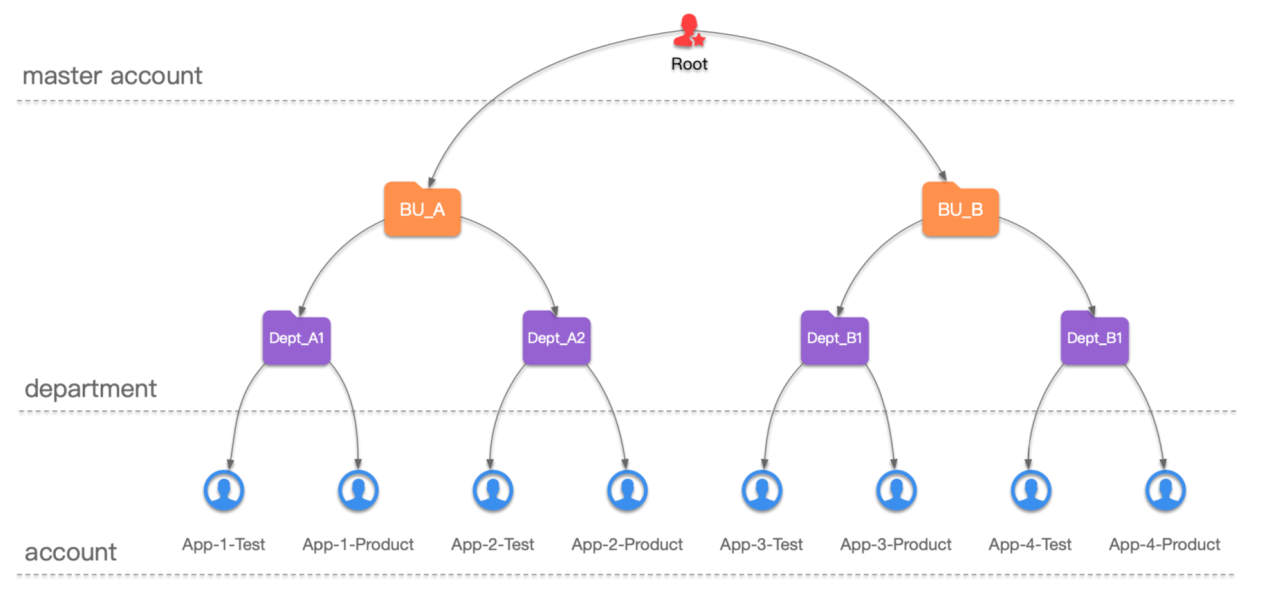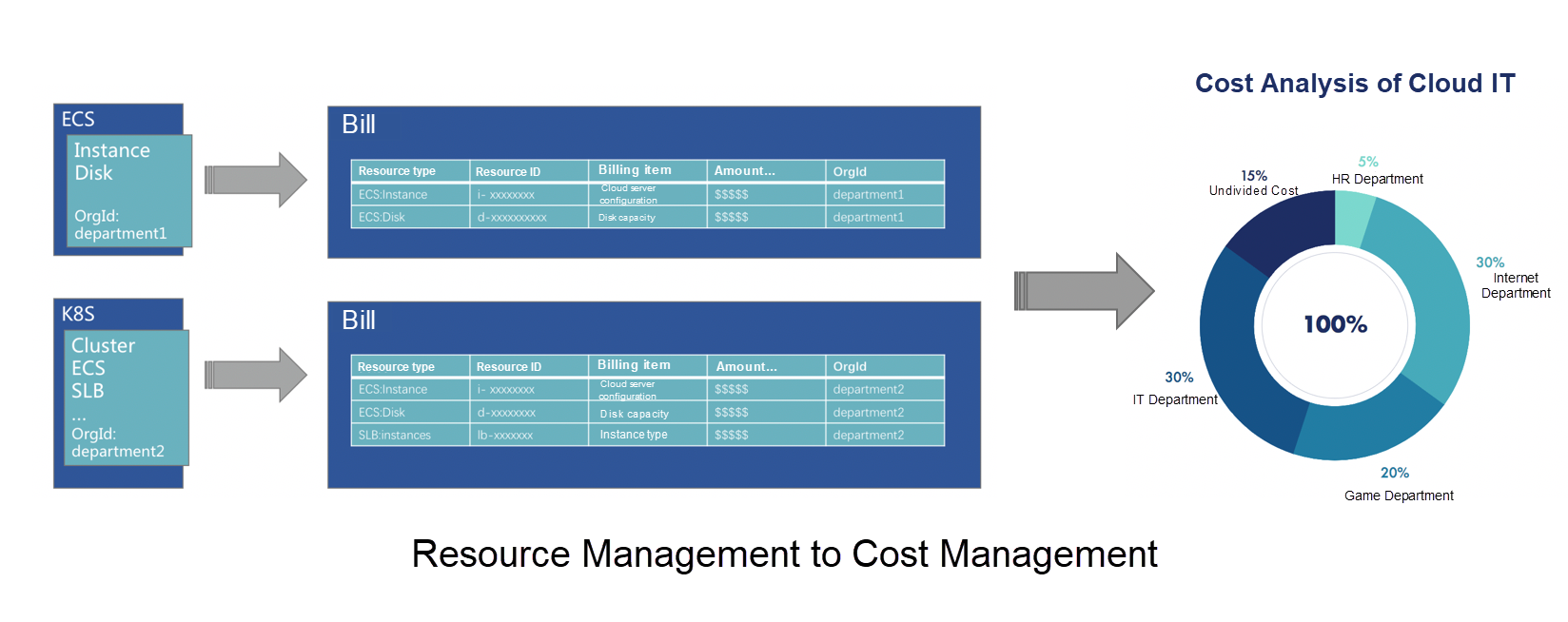Catch the replay of the Apsara Conference 2020 at this link!
By Chen Yunlong, Head of Alibaba Cloud Open Platform
When we shop on Taobao, we will check the goods' prices and coupons to calculate their costs. This is especially important when it comes to enterprise procurement. Each sum of money must be recorded clearly.
For most enterprises that migrate to the cloud, IT spending is a big part of their costs. Many enterprises may ask:
These problems reflect three major cost-related demands of enterprises for cloud migration: cost visualization, consumption predictability, and cost optimization. , The most fundamental part among them, cost visualization, is to make accounts clear.
Today, let's take a look at how to cast accounts on the cloud!
In addition to understanding on-cloud consumption by calculating costs, enterprises also need to figure out how money is spent in a more fine-grained manner. This is what we call account splitting. Account splitting helps enterprises separate on-cloud expenditures by applications, projects, and departments. In this way, enterprises will know the ROI of each project.
Enterprises usually perform cloud migration step by step. Most of them would migrate a business unit first and manage it independently. At this time, there is no demand for account splitting because each business unit has an independent account. As an enterprise migrates to the cloud on a large scale, its cloud team expands and on-cloud expenditures increase. The management model will also transform from decentralized management to centralized management by a cloud governance team (or the central O&M team) with centralized payment and cost allocation.
The account splitting in an enterprise can be divided into two modes:
Chargeback, the more mature account management, helps transform IT departments from a cost center to a capability center.
Since both Showback and Chargeback are standard practices, why are their weaknesses amplified after migration to the cloud? With a traditional self-built data center, the procurement of the IT infrastructure is strictly executed according to the process of the enterprise's financial budget, procurement, and delivery. The cost can be well managed by teams or projects. After the enterprise migrated to the cloud, it completely broke the "system" and encountered several major situations:
A cloud service provider is a super platform that sells everything. Customers can be easily overwhelmed by hundreds of product categories, thousands of commodity categories, tens of thousands of SKUs, and billing items. Except for standard virtual machines (VMs), most products are new to customers. When using new products, customers will not consider account splitting in the first place.
Only Microsoft Azure supports tag-based account splitting on the first day of its release. AWS went through a process for developing tags. It supported several tags in the beginning, dozens of tags in 2018, and hundreds of tags in 2020. In this process, many resources cannot be tagged and the problem remains today. This situation is more prominent on Alibaba Cloud. Only 28 cloud products supported tag-based account splitting in September 2020, compared with three in April 2020. Therefore, on our platform, few customers heavily rely on tags.
IT departments need tags, but tags are attached to instances by the DevOps team of each business unit. If an enterprise lacks the cloud governance process, programmers will not add tags by themselves.
Account splitting's implementation must be supported by a leadership review. Cost accounting should be a part of the monthly or quarterly business review. Thus, the orderly conduct of other processes can be guaranteed by this top-to-bottom mode.
Presently, many enterprises choose the multi-account mode based on resource directory management for cloud migration. In this mode, each application is an independent account in the application directory. Therefore, all expenses under this account can be fully included ins the costs of this department. We recommend our customers to use the IT Governance Workshop for Group Enterprises for multiple accounts, which will soon be released by Alibaba Cloud Open Platform. In this IT Governance Workshop, we have best practices for account naming and folder organization.

If multiple departments share an account, users must add tags to distinguish the purpose of resource utilization. In this process, the O&M team is responsible for distinguishing the function and execution method of tags:
Regardless of the tagging method, when a tag is added, the tag will be transferred from the resource management system to the bill of the expense center. When using Excel or other BI tools, users can see the relationship between expenses and departments. Alibaba Cloud's finance unit can be associated with tags and appear on the bill at the same time.
Resources that cannot be tagged or do not have tags must be regularly reviewed. Users can use the require-tag template in the config to review these resources. If a resource should be tagged but has not been tagged, users should tag it as soon as possible. If a resource cannot be tagged, send a request to Alibaba Cloud. In this way, the costs of the resource, which cannot be tagged, can be controlled below 10%.

Finally, through tag-based account splitting, you can show an enterprise's CFO a more accurate cost allocation report, and the part that can't be separated by account splitting can be noted for follow-up action. For specific operations, users can search "Best Practices for Tag-Based Account Splitting" on Alibaba Cloud's official website.
For shared resources, such as CEN, NAT gateways, traffic packets, advance payment of Reserved Instance (RI), and support plans, cloud service providers do not provide more fine-grained solutions for account splitting. Currently, the common practice is to split an account according to a fixed proportion that has been negotiated.
If you require a more accurate cost allocation, more calculations are needed. For example:
Has your enterprise settled the accounting on the cloud? You're welcome to consult and communicate with us.
Management Automation – Enterprises' Inevitable Approach to Cloud Migration

2,599 posts | 769 followers
FollowAlibaba Cloud MaxCompute - August 15, 2022
Alibaba Clouder - May 29, 2020
OceanBase - September 14, 2022
ApsaraDB - December 17, 2024
悟冥 - December 2, 2020
digoal - September 22, 2022

2,599 posts | 769 followers
Follow Cloud Migration Solution
Cloud Migration Solution
Secure and easy solutions for moving you workloads to the cloud
Learn More Database Migration Solution
Database Migration Solution
Migrating to fully managed cloud databases brings a host of benefits including scalability, reliability, and cost efficiency.
Learn More ISV Solutions for Cloud Migration
ISV Solutions for Cloud Migration
Alibaba Cloud offers Independent Software Vendors (ISVs) the optimal cloud migration solutions to ready your cloud business with the shortest path.
Learn More Architecture and Structure Design
Architecture and Structure Design
Customized infrastructure to ensure high availability, scalability and high-performance
Learn MoreMore Posts by Alibaba Clouder